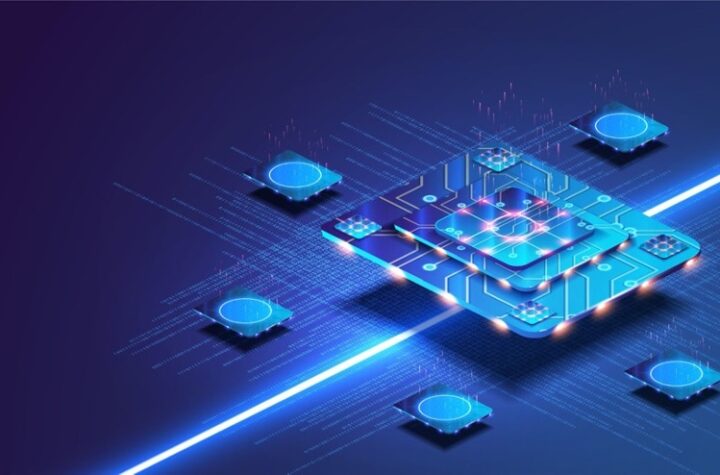
Smart Eye technology provides solutions for industries such as manufacturing, fashion, restaurants, healthcare and education. Smart-eye technology is similar to Google’s ambitious Project Glass. Smart Eyes are equipped with sensors, Wi-Fi and Bluetooth to provide accessibility and features in front of your eyes without causing distraction.
A IoT connectivity landscape platform links and consolidates IoT device management. It also simplifies IoT device controls, making them more scalable. It also helps reduce the time it takes to set up a new IoT system.
Although IoT sensors, devices, and protocols are essential to this possibility, it does not matter if people have to recognize that the Internet is a project of real clock technology in all its aspects: framework, regulation, significance, and safety. For example, in many cases we need smart networking technologies, connected devices, ability to act, real intelligence in action, sedentary analysis of data, intelligent use of data to solve challenges, create competitive advantages, automate processes, improve possible actions, etc. This is what our IoT solutions want to address. The Internet of Things and big data are useful for its use in understanding the importance of intelligence, big data analytics and cognitive AI.
To unlock the full potential of the Internet of Things, companies need to understand value creation opportunities and address the underlying challenges. Scalable solutions for a wide range of mobile devices will power our connected digital lives on the go. With a happy mind, the Internet of Things will enable companies to transform themselves from a business that needs competitive differentiators to innovative solutions for the Internet of Things.
Cloud services are an essential part of any IoT platform, and there are many protocols to choose from. Protocols need to be synchronized with existing networks to expand as IoT solutions take hold. Local connectivity should be part of the IoT solution, and your provider should have the means to connect to the outer edges of the platform with sufficient backup technology.
Security is another issue of great concern in the debate on IoT as there is a fundamental tension between the need for better functionality and the risks associated with exposing more portals to the internet to more users and potential hackers. Industrial and mining companies use IoT solutions to improve and monitor the condition of pipes and mining equipment to prevent disruptions and to ensure worker safety. These solutions allow them to control surveillance cameras, Wi-Fi coverage, electronic billboards and other mission-critical devices, environmental sensors and charging stations.
The most common examples of IoT applications in smart cities are tracking, routing and fleet management solutions for public vehicles such as Fleet.io. Sensors from the Internet of Things help detect the exact location of vehicles and monitor driver behavior, vehicle conditions, and the condition of the core system. Another example of the use of the Internet of Things in smart building systems is Zata, which measures and controls air quality.
Sensors whirr when your team guests leave food bowls, luggage or shopping trolleys at the door. Intelligent technology can track maintenance schedules to avoid failures. With IoT solutions that go beyond intelligent RFID tags, you can automate processes and send tasks to employees depending on device status.
Hoteliers need more opportunities to reduce costs and improve the customer experience. Third-party vendors must ensure from the outset that IoT solutions provide the features and functionality needed to meet customers “needs. Once companies are familiar with this approach, they can work with IoT solutions that are already included in the IoT.
Other components of IoT platforms include IoT data management, access control and application development and enabling. Microsoft and AWS offer IoT platforms and are considered to be one of the IoT platforms that represent a safe bet.
ARs Mbed IoT is a platform for developing apps for the IoT based on ARM microcontrollers. The platform is to provide a scalable, connected and secure environment for IoT devices to integrate with Mbed tools and services.
The Internet of Things (IoT) is a system of interconnected computer devices – mechanical and digital machines, objects, animals and humans – that provides unique identifiers (UIDs) and the ability to transmit data over a network without the need for human-to-human or human-computer interactions. IoT things – a human heart monitor implanted in a farm animal, a biochip transponder in a car with built-in sensors that warn the driver when the tire pressure is low, or another natural or man-made object – receive an IP address (Internet Protocol) and can transmit the data over the network. There are more than 600 different IoT platforms and there is a guarantee that they will work together in the next three to five years.
It is a difficult task for IT managers who want to deploy IoT devices in their company knowing that they will be held accountable by the provider if the solution doesn’t work as advertised or disappears. Net result is that when you select an IoT device or platform, you not only check the solution to see whether it meets your business needs, but also calculate the lifetime of the manufacturer as a product.
For companies, the decision to build or buy IoT solutions is a constant mystery, given a thorough evaluation and understanding of the full range of related criteria. Building tailored IoT solutions for your business may sound tempting, but it can be difficult to support and afford such platforms. Given the significant benefits of the Internet of Things, and its remarkable growth (according to a McKinsey report, it will generate $11.1 trillion by 2025), it is important for companies to decide whether to purchase third-party IoT systems and services or build in-house solutions to maximize the value of resources.
Differentiations such as those observed in remote services, intelligent monitors, data silos and M2M interactions form the core of IoT solutions. Key features of the IoT platform, reliability and innovation are the name of the game when it comes to the hardware and software that underpins the platform.




More Stories
AI & Machine Learning: Dedicated Servers with GPUs – Powering the Future
Methods to avoid phishing scams
Anonymous note-taking – Tips for maintaining your privacy